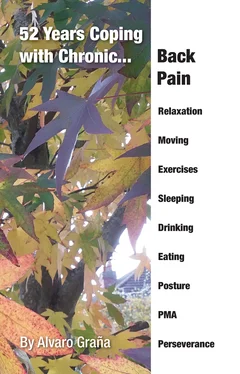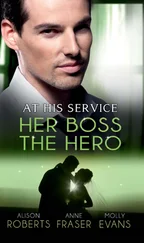It is important to recognise that long-term emotional pain can lead to physical symptoms as well as the other way around.
Words to do with pain
Describing pain can be very difficult. Here is a list of words that might be associated with pain:
Ache – Anguish – Misery – Suffering – Torture – Affliction – Agony – Discomfort – Pangs – Twinge – Distress – Torment – Wretchedness How would you describe your pain? These are some symptoms:
You might feel:
– a sharp pain
– a nagging pain
– a persistent/constant pain
– edgy (ie.: nerve pain)
– a stabbing pain
– a niggling pain
– a tight (stiffnes) pain
Pain can result in the following side effects:
– stomach ache
– constipation
– insomnia (difficulties in sleep)
– nausea
– dizziness
– lethargic/spaced out
– very low in energy/tired/exhausted
Describing your mood while carrying pain can also be difficult. These are some descriptions:
– Fed up
– Worried
– Anxious
– Confused
– Depressed
– Angry
– Embarrassed
– Very sad from feeling sorry for yourself
– Frustrated
– Introverted
– Aggressive
– Moody
– Impatient
Other nagging thoughts can be:
– Will the pain stop?
– Financial worries
– Will I lose my job?
– Sexual problems
– I am always loosing my temper
– Why me…?
– I used to be very strong and independent, now look…?
– What will other people think of me? Look at me…
– Will I end up… severely damaged?
in a wheel chair?
being rejected?
– Self-pity
Personal experince - I reacted to pain very badly with a negative response. I got very angry, had mood swings sometimes feeling sorry for myself allowing the pain to get me down. Right through my first phase I suffered from regular migrains, which were sometimes severe. I was not in control. In the second phase I began to realise how my mental state affected me physically. Talking about nagging thoughts, I experienced most of those mentioned above, including the thought of ending up in a wheelchair in the future, as mentioned by the doctor I first saw right after my injury. This could be described as the poor me syndrome. To summarise, right through my first phase (40 years, from 1961 till 2001) I suffered from regular lower back pain, pain to my sciatic nerve down my right leg, pain to my upper back and migrains. By 2001, I realised that I needed to be more self-aware and to devise a method of how to respond to pain, in order to feel in control of my situation.
How we respond to pain
It is difficult to establish why one person appears to feel less pain than another in similar circumstances. Pain perception is more likely to stem from a combination of factors which may include:
– the state of the individual person’s nervous system: This could be due to genetic make-up and/or degenerative consequences. Some people’s nervous system is naturally more efficient.
– the consequences of reducing health: Younger people are usually better able to deal with trivial injuries than the majority of older people. In addition to the general effects of ageing, some people become weakened further by chronic disabling illnesses or injuries.
– personality: Where people are of similar age and comparable health, inherent personality may be a motivating factor. People with strong will power, often try harder to conceal what they perceive as deficiencies, whereas other people tend to be more sensitive and less likely to disguise their feelings.
– circumstances: In extreme conditions a person with a focussed mind is often capable of blocking out unpleasant stimuli. An example of this is when soldiers in battle continue to fulfill their mission despite severe injuries, because of their overriding struggle to win and their survival instinct masks everything else.
Physical pain and psychological pain are very much linked together. One can affect the other. Many medical practitioners, both alternative and conventional are considering a wholistic approach as a more effective form of healing. This means mind and body being treated as a whole rather than as separate entities: the mind can heal the body and the body can heal the mind. For instance using a treatment of diet and exercise, and in addition adopting a positive mental attitude towards his/her living and working conditions, may diminish the symptoms of mental or emotional pain.
Our attitude to pain is absolutely crucial. A negative attitude may lead to extra tension, stress and unhelpful messages being sent from the mind to the body, which consequently aggravate the on-going pain situation. We need to accept pain and work with it, especially those who suffer from chronic pain. The ability to control our reactions, the response of those around us and the situation causing the pain will affect our tolerance to it. Knowledge and understanding could help towards our ability to implement Pain Management.
Personal experience - During my second phase I was not mentally strong enough to deal with chronic pain. My negative attitude did not help. I was not in complete control of my stressful life either. I began to realise that I had to juggle lots of things at the same time. Lets go back a bit, between 1973 and 1975, while I was a post-graduate student in London, I started to try different alternative solutions.
My GP referred me to St. Thomas’ Hospital. At first they tried Traction Treatment, which included some traction exercises for me to do at home. This was not successful. The doctors then tried epidural injections which were also ineffective. After these unsuccesful treatments they recommnded acupuncture which unfortunately did not help either.
Later I went to see a back specialist at East London Hospital. After a thorough examination and looking at my past history, he recommended specific physio exercises in order to strengthen my back muscles, rather than surgical intervention. At this point I was still hoping for a magical medical cure. Exercise did not seem to me to be a proper medical solution.
During these two years in London, I was not often in control of my pains and mental state. When I practiced pain management I was more in control of my life in general, while at other times, when I allowed pain to take over, the pain was more intense. It is possible to endure chronic pain without being controlled by it. It is a matter of knowing how to minimise the pain, knowing that “pain can be let in the gate”, as the scientists Melzack and Wall found out.
CHRONIC PAIN - THE GATE CONTROL THEORY OF PAIN
In 1965 two scientists, Ronald Melzack and Patrick Wall, carried out research into pain systems. They proposed that the Gate Control Theory of Pain offers a physiological explanation for the previously observed psychological effects of pain perception.
According to this theory there are ‘ gates’ in the neuromuscular junctions, the spinal chord and the pain centres in the brain. When these gates open and let the message through the system, we feel pain. The gates can also stop messages entering the system, so that the pain is reduced or not felt.
In the 1970s, it was discovered that the body can make its own opioid-like substances called endorphins (we shall expand on this later on), which can reduce pain by acting as a pain-killer. Codeine and morphine for instance contain pain relief substances found in opium poppy seeds. Morphine attaches to the same receptors in the brain as endorphins. Endorphins can help close the gate . Researches believe that the body releases increased levels of endorphins into the blood stream during and immediately after exercise. These endorphins became the popular answer to anything that gave pleasure, such as regular sex, masturbation and orgasms (more on this later on).
Читать дальше












